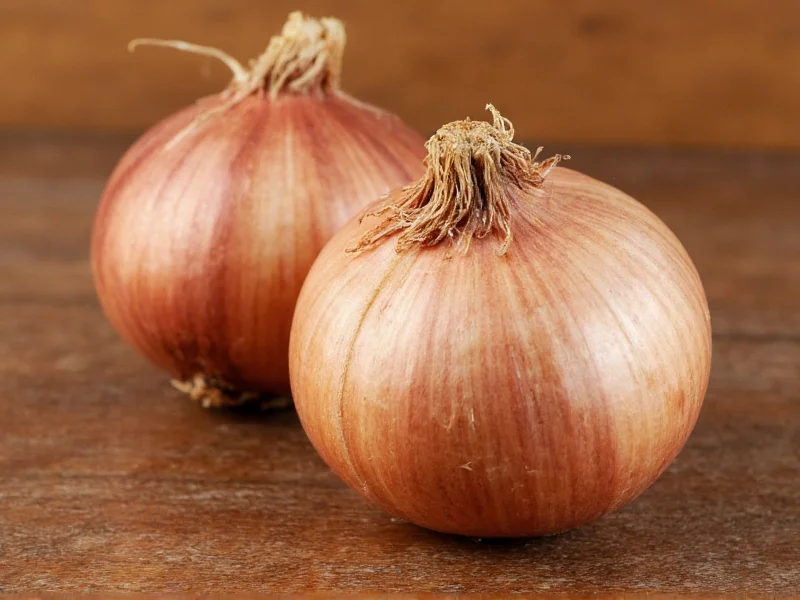Understanding dried onion equivalents is essential for consistent cooking results when fresh onions aren't available. The dehydration process concentrates onion flavor while removing moisture, creating significant differences in volume and intensity between dried and fresh forms. Professional chefs and home cooks alike need precise conversion knowledge to maintain recipe integrity across different onion preparations.
Understanding Onion Conversion Ratios
The fundamental principle behind dried onion conversions is moisture removal. Fresh onions contain about 89% water, while dried onions have most moisture extracted. This concentration means dried forms deliver more intense flavor in smaller volumes. The standard conversion ratios provide reliable starting points, though personal taste preferences and specific recipes may require slight adjustments.
| Dried Onion Form | Equivalent to Fresh Onion | Common Recipe Measurement |
|---|---|---|
| Dried minced onion | 1 tbsp = 1/4 cup (4 tbsp) | 1 cup dried = 4 cups fresh |
| Onion powder | 1 tsp = 1/4 cup | 1/4 cup powder = 4 cups fresh |
| Dried onion flakes | 3 tbsp = 1 cup | 1 cup flakes = 3 cups fresh |
Flavor Considerations in Substitution
Dried onions provide consistent flavor without the variability of fresh onions, which change sweetness based on season and variety. However, they lack the bright, sharp notes of raw fresh onions. When substituting dried for fresh in raw applications like salads or salsas, consider rehydrating dried onions first by soaking in warm water for 15 minutes. For cooked dishes, add dried onions earlier in the cooking process to allow full flavor development.
The conversion ratio for dried onion to fresh onion becomes particularly important in spice-sensitive recipes like soups, stews, and braises where onion forms the flavor foundation. In baked goods or delicate sauces, precise measurements prevent overpowering other ingredients. Remember that dried onion equivalents to fresh vary slightly between brands due to different dehydration methods and particle sizes.
Practical Cooking Applications
When converting recipes calling for fresh onions to dried forms, consider the dish's cooking time. Long-simmered dishes like chili or tomato sauce benefit from dried onions' concentrated flavor, while quick-cooking recipes may require rehydration for optimal texture. For the dried minced onion equivalent to fresh in marinades, use half the standard ratio since acids intensify dried onion flavor.
Professional kitchens often maintain both fresh and dried onions for different applications. Fresh onions work best for garnishes and raw preparations, while dried forms excel in spice blends, dry rubs, and shelf-stable mixes. Understanding dried onion flakes equivalent to fresh measurements helps maintain consistent flavor profiles across seasonal ingredient variations.
Storage and Shelf Life Considerations
Dried onions offer significant shelf stability advantages over fresh varieties. Properly stored in airtight containers away from light and moisture, dried onion products maintain quality for 12-18 months. This extended shelf life makes them valuable pantry staples, though their potency gradually diminishes over time. When using older dried onions, you may need to increase quantities slightly to achieve equivalent flavor to fresh onions.
Common Substitution Mistakes to Avoid
Many home cooks make the error of using equal volumes when substituting dried for fresh onions, resulting in overpowering dishes. Remember that the dried onion equivalent to fresh measurement requires significantly less dried product. Another common mistake involves substituting onion powder for minced dried onion without adjusting quantities - powder is more concentrated and requires even smaller amounts.
When converting from fresh to dried onions in baking recipes, particularly savory breads or biscuits, reduce liquid content by 1-2 tablespoons per cup of dried onion substituted. This accounts for the moisture that would normally come from fresh onions. The precise dried minced onion equivalent to fresh measurements ensures proper texture and flavor balance in baked goods.
Can I substitute onion powder for fresh onions in soup?
Yes, use 1 teaspoon of onion powder to replace 1/4 cup of fresh chopped onions. Add the powder early in the cooking process to allow full flavor development, and remember that onion powder is more concentrated than dried minced onion, so adjust accordingly.
How do I rehydrate dried onions for raw applications?
Soak 1 tablespoon of dried minced onion in 3 tablespoons of warm water for 15 minutes. This rehydration process restores some texture and makes dried onions suitable for salads, salsas, or other raw preparations where fresh onions would normally be used.
Why does my dish taste too strong when I substitute dried for fresh onions?
This happens when using equal volumes instead of following proper dried onion equivalents. Dried forms are more concentrated, so using 1:1 substitution creates overpowering flavor. Always use the standard ratio: 1 tablespoon dried minced onion equals 1/4 cup fresh chopped onion.
Do different onion varieties affect the conversion ratio?
The standard dried onion to fresh onion conversion ratios work well across most varieties. However, sweeter varieties like Vidalia may require slightly less dried product, while sharper varieties like red onions might need the full conversion amount due to their stronger flavor profile when dried.
Can I make my own dried onions at home?
Yes, thinly slice fresh onions and dehydrate at 140°F (60°C) for 6-10 hours until brittle. The homemade dried onion equivalent to fresh measurement remains the same as commercial products, though homemade versions may vary slightly in moisture content and intensity.











 浙公网安备
33010002000092号
浙公网安备
33010002000092号 浙B2-20120091-4
浙B2-20120091-4